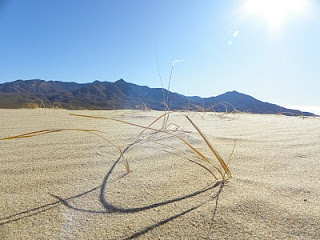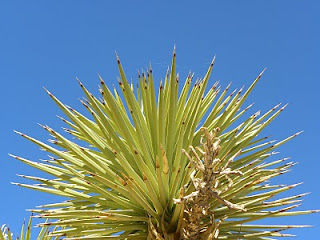UK Travel Article Featuring the Mojave
The Guardian, a UK newspaper, featured a travel article highlighting the wonder of the Mojave Desert: From The Guardian A murder is about to happen. Fifteen metres away from us, beside a bullet-ridden oil can, a coyote sniffs the air. My daughters stop the Indian Runner jog they have recently developed across the acres of unfenced Mojave desert, and watch. The victim-to-be, a clueless jackrabbit, sits between us and the coyote, among a family of quail, who are scrabbling for insects under a scrubby creosote bush. "Stay still," I murmur, grappling in my pocket. I pull out my Swiss Army knife, and open it up. I know that coyotes rarely attack but best to be prepared. "That's the corkscrew bit, Mum," my seven-year-old, Ruby, says. "It's the only one I can do with my nails," I whisper. Luckily for me, the wild dog decides none of us, not even the jackrabbit, is worth bothering about and trots off towards the San Gorgonio mountains 60 miles to



